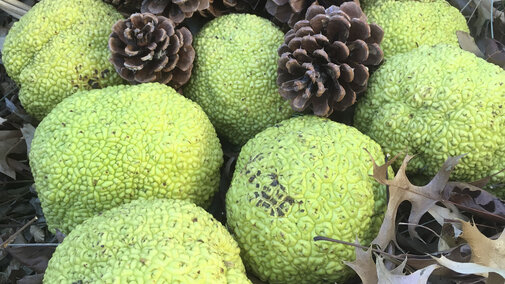Maclura pomifera
,
Deciduous
Osage orange was first cultivated in the south in the early 1800s. It was brought north by Professor Jonathan Turner, a biology teacher
at Illinois College, and promoted as a living fence by John Wright, editor of The Prairie Farmer

Where To Grow
As with all trees, its success is determined by the soil type, amount of available moisture, and adjacent infrastructure (buildings,
roads, etc.).
Suitable to plant throughout the state.
Size at Maturity
Tree Height
Tree Spread
Additional Considerations
Osage orange has the potential to invade areas abused by poor management and the overgrazing of pasture and rangeland. This plant may
become weedy or invasive in some regions or habitats and may displace desirable vegetation if not properly managed.
Interesting Facts
Osage orange has a long and interesting history of use by both Native Americans and early pioneers. Its wood was once in demand for
making hubs and wheel rims for horse-drawn wagons, mine support timbers, posts and many other uses where decay resistance was important.